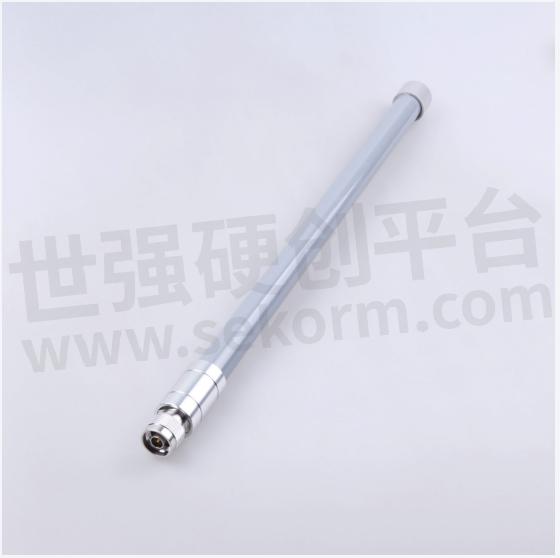Introduction to the Principles of Fiberglass Antenna

Fiberglass Antenna, commonly made of Glass Fiber Reinforced Plastic (GFRP), is a lightweight and high-strength antenna widely used in wireless communication, broadcasting, aerospace, and other fields. This article will introduce the working principle and advantages of fiberglass antennas.
Working Principle
The working principle of fiberglass antennas is based on the principles of electromagnetic wave radiation and reception. When electromagnetic waves pass through the fiberglass antenna, they induce currents in the conductive part of the antenna (such as metal wires or sheet conductors). This current generates an electromagnetic field, which is then transformed into radio waves radiated into the surrounding space.
Fiberglass antennas can be designed and structured to transmit and receive signals in specific frequency bands or polarization modes. For example, cylindrical antennas are commonly used for transmitting and receiving vertically polarized signals, while planar antennas are suitable for transmitting and receiving horizontally polarized signals.
Advantages
Lightweight: Fiberglass antennas, being made of fiberglass-reinforced plastic, are lighter than traditional metal antennas. This not only facilitates the portability and installation of the antennas but also reduces the load on buildings and support structures.
High Strength: Fiberglass materials have high strength and rigidity, allowing the antennas to maintain stability in harsh environmental conditions such as wind and earthquakes. Compared to metal antennas, fiberglass antennas are more adaptable to diverse working environments.
Corrosion Resistance: Fiberglass materials can effectively resist factors such as acid, alkali, moisture, and corrosion, thereby prolonging the service life of the antennas. Particularly in corrosive environments such as marine areas and industrial pollution zones, fiberglass antennas demonstrate significant advantages.
Insulation Performance: Fiberglass materials are excellent insulators, which better isolate the antenna from the grounding system of the support structure. This helps reduce intermodulation interference during antenna operation and radiation of electromagnetic waves in unintended directions.
Design Flexibility: Fiberglass antennas can be designed and manufactured in various shapes and sizes to meet specific engineering requirements. This makes fiberglass antennas an ideal choice for different application scenarios and operating frequency bands.
In summary, fiberglass antennas play an important role in wireless communication and broadcasting due to their advantages of lightweight, high strength, corrosion resistance, insulation performance, and design flexibility. With advancements in technology and increasing demands, fiberglass antennas will find further applications and development in various fields.

- +1 Like
- Add to Favorites
Recommend
- Kinghelm KH-BLG-LORA-WZ fiberglass Antenna: Expanding Possibilities for Remote Monitoring in IoT
- Versatile Connectivity: The Applications of Kinghelm KH-BLG-K4G-WZ 4G Grey Fiberglass Antenna
- AI & Machine Learning: Simplifying IoT Antenna Integration with Virtual Antenna® Technology
- Revolutionary Virtual Antenna® Solution for Revolutionary Ski Boot Design
- NeuronicWorks Partners with Ignion to Accelerate IoT Device Designs with Virtual Antenna® Solution
- Antenna Intelligence Cloud™ Simplifies Designs with Multiple Antennas
- Virtual Antenna®, the clear winner over PCB trace in reducing hardware iterations
- Safer Journey Awaits: Igniting Road Safety with Virtual Antenna® Technology
This document is provided by Sekorm Platform for VIP exclusive service. The copyright is owned by Sekorm. Without authorization, any medias, websites or individual are not allowed to reprint. When authorizing the reprint, the link of www.sekorm.com must be indicated.






























































































































































































































































































































































































































































































































































































































































































































































































































































































